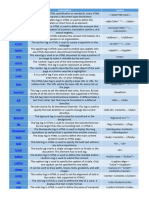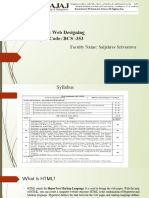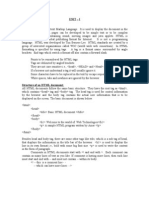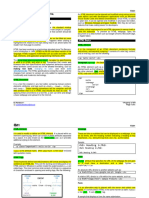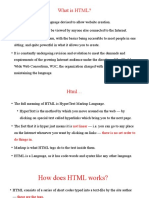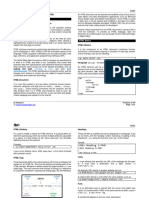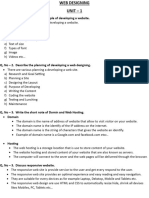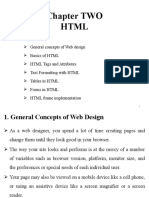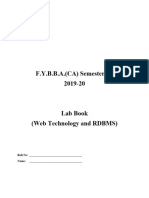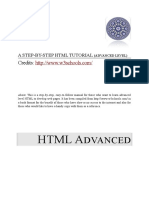0% found this document useful (0 votes)
6 views4 pagesHTML Tags
The document provides a comprehensive overview of various HTML tags, including their descriptions and syntax. It covers tags such as !DOCTYPE, html, body, and others, detailing their functions and usage in HTML documents. Additionally, it highlights tags that are deprecated in HTML5, such as applet and center.
Uploaded by
manikandanCopyright
© © All Rights Reserved
We take content rights seriously. If you suspect this is your content, claim it here.
Available Formats
Download as PDF, TXT or read online on Scribd
0% found this document useful (0 votes)
6 views4 pagesHTML Tags
The document provides a comprehensive overview of various HTML tags, including their descriptions and syntax. It covers tags such as !DOCTYPE, html, body, and others, detailing their functions and usage in HTML documents. Additionally, it highlights tags that are deprecated in HTML5, such as applet and center.
Uploaded by
manikandanCopyright
© © All Rights Reserved
We take content rights seriously. If you suspect this is your content, claim it here.
Available Formats
Download as PDF, TXT or read online on Scribd
/ 4

